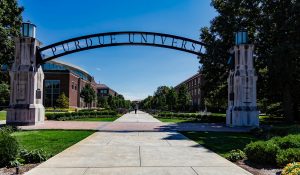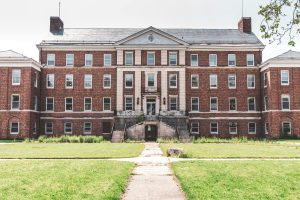University

A university is a high-level institute of academic study and research, awarding several degrees in various theoretical disciplines. Mainly, universities provide programs in undergraduate and postgraduate fields of academia. Moreover, it was a high-degree awarding institution in the initial respect that it used the word universities.
This institute was totally autonomous from the ecclesiastical schools and bestowed both secular as well as non-secular degrees. The word universities, in its original Latin, denotes generally “various persons associated into one body, a society, organization, community, guild, corporation.
As the life of village towns and the medieval guilds developed, collective bodies of students and teachers with rights of common law came to be designated by this term. Like other guilds, they governed themselves and determined the qualifications of their members.
In modern English usage, the term has assumed the sense of “an institution of higher education providing instruction in chiefly non-vocational subjects and typically empowered to grant degrees”. The earlier characteristic of its corporate character is no longer the dominant attribute a modern university is accorded.
Academic freedom
A central notion in the definition of a university is that of academic freedom. Today, this is declared the birthplace of “academic freedom”. This is now a widely accepted notion internationally in research. Though each institution is composed unlikely, almost all universities have a board of trustees a president, chancellor, or rector at least one vice president, vice-chancellor, or vice-rector; and deans of several divisions.

A university usually has several academic departments, schools, or faculties. These are state-owned higher education boards. They oversee the public university systems, analyze financial requests and budget proposals, and then grant funds to each university in the system. They also approve new courses of commands and retire or modify existing ones. Lastly, they prepare for the further coordinated development and growth of the different institutions of higher education in the state or country.
However most public universities, scattered throughout the world still enjoy considerable economic, research, as well as pedagogical autonomy. Private universities are financed privately and typically have a lot of independence from state policies. However they still independent from business organizations depending on sources of finance.
University structural setup
University funding and structural setup have differences significantly both in and across countries of the world. Some fund universities mainly through getting their finances from the state, while in some countries it is through donor funding or fees that students pay to attend the university. The majority of the students in some of the countries attending universities is seen while universities in other countries attract students from every corner of the world and sometimes even offer university accommodation for their students.
It’s unclear whether the spread of universities was absolutely a progressive move, since the 17th century was characterized by events that had adverse effects on university expansion. Many wars, especially the Thirty Years’ War, interrupted the university landscape throughout Europe at unlike times. War, plague, famine, regicide, and other shifts in religious power and structure tended to hurt the societies that provided assistance for universities. Other reasons that universities were weakened include student brawls and truant professors in the universities themselves.

The older curricula were not so ready to let go of their past traditions, and the fact that reliance on works of Aristotle persisted was really contradicted by science and crafts advances taking place at this time. This period was further complicated by the rise of the nation-state also. As universities came increasingly under state control or were founded under the aegis of the state, so the faculty governance model was ever more prominent. Although the older student-controlled university continue to exist, these start out to drift toward approaching this structural company.
University scholars
University it analysis of how humanism influenced scholars in medicine, mathematics, astronomy, and physics may leave one with the impression that humanism and the universities composed a mighty stimulus for the scientific revolution. Even though the connection between humanism and scientific discovery may have started within the university, the interface has often been conceived as being severed by the transformation of science during the Scientific Revolution. Historians like Richard S.
Westfall have argued that this overt traditionalism of universities’ shy strive to re-conceptualize nature and knowledge caused an indelible tension between university and scientists. This reluctance towards change in science might have been one crucial reason for the drift of many scientists away from universities and towards private patrons, usually found in princely courts, and affiliations with newly developing scientific societies.
Scientific Revolution

However, the pressure among university, individual scientists, and the scientific revolution itself to look at was undoubtedly there on the way the university education was constructed. The creation of new scientific forms during the scientific revolution and the epistemological provocation that were part and parcel of this creation instigated both the notion of the freedom of science as well as the hierarchy of the disciplines.
Rather than entering into the higher education system with the aim of becoming a “general scholar” steeped in the full curriculum, there emerged a sort of scholar who emphasized science and treated it as a job in itself. The chasm between these science-oriented scholars and that immobile who were entrenched in the concept of an extensive scholar exacerbated the epistemological contradictions that were slowly surfacing.
Modern university Period
university the close of the prompt modern period, the form and trajectory of higher education had been turned upside down in ways that were unmistakably recognizable in the modern context. Aristotle was no longer a source of power providing epistemological and procedural focus for universities and a more mechanical orientation was appearing.
This set the hierarchical place of theological knowledge, which for the most part had been displaced. The humanities had gained a place and a new receptiveness began to take hold in forms of knowledge building and dissemination that became the rubrics for building the modern state
